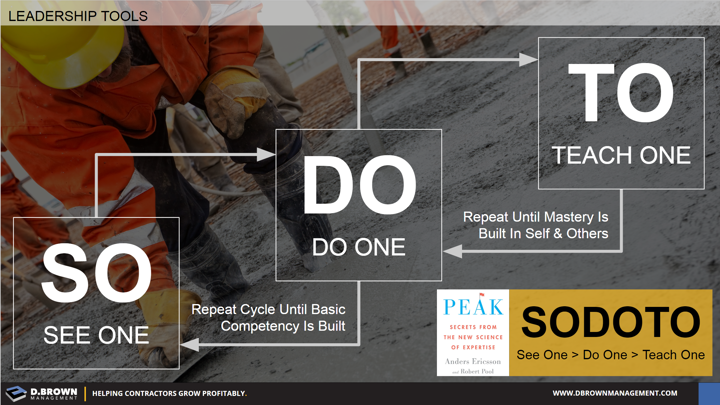Beyond that there are many more that have specialized purposes for each situation. Crafts people take great pride in acquiring, mastering and caring for an ever growing set of tools for their toolbox.
"Before you are a leader, success is all about growing yourself. When you become a leader, success is all about growing others."
The apprenticeship model of training has worked for thousands of years in the crafts with someone constantly moving between the roles of student and teacher on their “Journey” to Mastery.
For the leaders of construction companies we must not forget these valuable lessons from the field.
- We must work every day to learn new “tools” for training and development - these are the tools of leaders.
- We must always engineer SODOTO cycles into the daily work throughout the company to help everyone accelerate their development.
- We must design the “Deliberate Practice” that we get at the craft level into our daily work as outlined in books such as Peak by Anders Ericsson.
Contact us to learn how we help teams accelerate their development.

